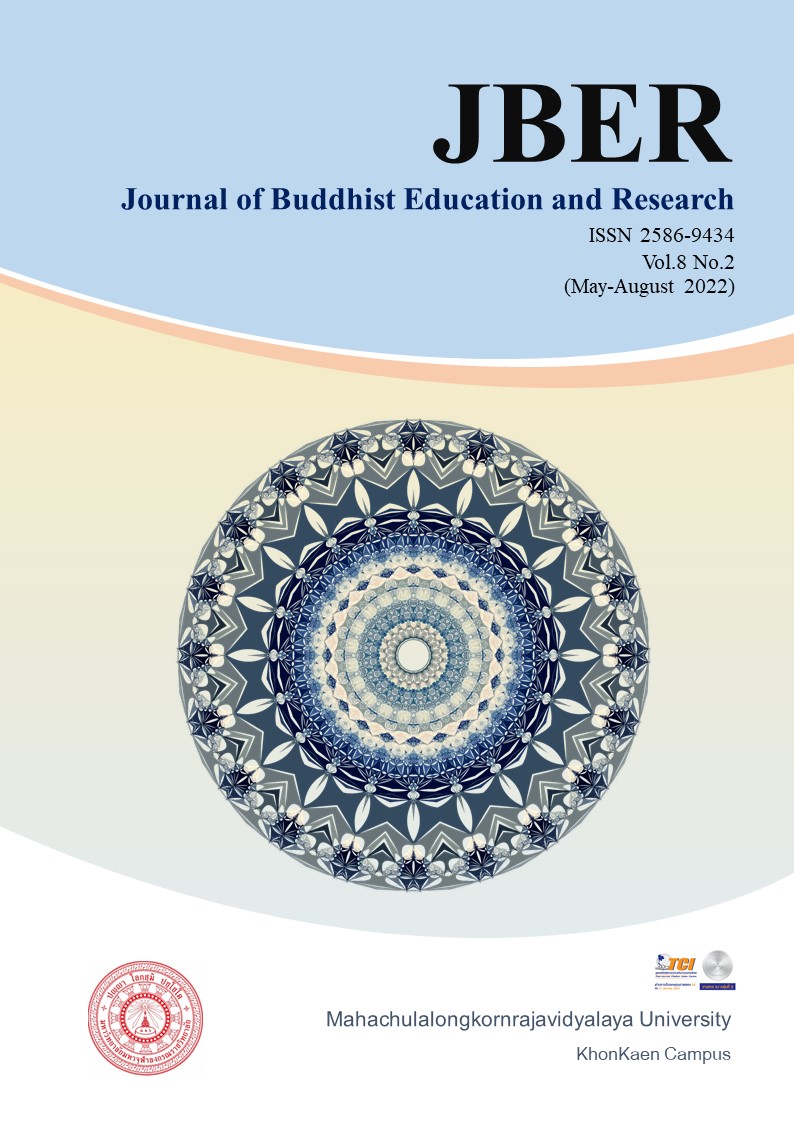THE DEVELOPMENT OF LEARNING ACHIEVEMENT AND FUTURE PROBLEM SOLVING FOR MATHAYOMSUKSA 1 STUDENTS
Keywords:
Learning Activity, Ability, Future Problem SolvingAbstract
This independent study purpose were: 1) to create and study the effectiveness Index of learning activities in the Future Problem Solving for Grade 7 students 2) to study of learning activities to future problem solving for Grade 7 students by learning level after using learning activities by the Future Problem Solving and compare ability of Future Problem Solving ".
The researcher use methodology method by research and development in 2 processes as follows, to create and study the effectiveness Index of learning activities in the Future Problem Solving for Grade 7 students 2) to study of learning activities to future problem solving for Grade 7 students with 20 students by 17 hours. The collect data was analyzed by mean standard deviation t-test for dependent and content analysis.
The results of the study revealed that:
1. Learning activities in the Future Problem Solving for Grade 7 students were composition includes learning activity, purpose activity, content activity, process activity, instructional media activity, and measurement and evaluation, the learning activities in the future problem solving was suitable at high level (x̅) = 4.74, S.D.= 0.38) and the effectiveness was 0.5821
2. The results of Learning activities in the Future Problem Solving for Grade 7 Conclude as follows,
2.1 The ability in thinking of future problem solving for Grade 7 after using learning activities in the future problem solving was significantly higher at based on (percentage 75.63)
2.2 The ability in thinking of future problem solving for Grade 7 after using learning activities in the future problem solving were higher than the previous study with statistical Significance at .05 level.
References
กระทรวงศึกษาธิการ. (2551). เอกสารประกอบหลักสูตรแกนกลางการศึกษาขั้นพื้นฐานพุทธศักราช 2551 ตัวชี้วัดและสาระการเรียนรู้แกนกลาง กลุ่มสาระการเรียนรู้สังคมศึกษา ศาสนาและวัฒนธรรม ตามหลักสูตรแกนกลางการศึกษาขั้นพื้นฐานพุทธศักราช 2551. กรุงเทพฯ: โรงพิมพ์ คุรุสภาลาดพร้าว.
กรมวิชาการกระทรวงศึกษาธิการ. (2551). เอกสารประกอบหลักสูตรการศึกษาขั้นพื้นฐาน พุทธศักราช 2551. กรุงเทพฯ: โรงพิมพ์คุรุสภาลาดพร้าว.
ชัยวัฒน์ สุทธิรัตน์. (2561). 80 นวัตกรรมการจัดการเรียนรู้ที่มุ่งเน้นผู้เรียนเป็นสำคัญ.(พิมพ์ครั้งที่8). กรุงเทพฯ:พีบาลานซ์แอนปริ้นติ้ง.
พิมพ์ชนก แพงไตร. (2558). การพัฒนากิจกรรมการเรียนรู้ด้วยกระบวนการคิดแก้ปัญหาอนาคตตามแนวคิดทอแรนซ์ เรื่อง อาหารและการดำรงชีวิต เพื่อส่งเสริมความคิดสร้างสรรค์ สำหรับนักเรียนชั้นมัธยมศึกษาปีที่ 2. วิทยานิพนธ์ระดับปริญญาศึกษาศาสตรมหาบัณฑิต. สาขาวิชาหลักสูตรและการสอน. มหาวิทยาลัยนเรศวร.
พิพัฒน์ พบูลยวัฒนกิจ (2559). การพัฒนาผลสัมฤทธิ์ทางการเรียนและการคิดแก้ปัญหาอนาคตโดยใช้รูปแบบการจัดการเรียนรู้แบบการคิดแก้ปัญหาอนาคตตามแนวคิดของทอร์แรนซ์สำหรับนักเรียนชั้นมัธยมศึกษาปีที่ 5. วิทยานิพนธ์ระดับปริญญาศึกษาศาสตรมหาบัณฑิต. มหาวิทยาลัยศิลปากร
Torrance, (1985). A methodological study of the torrance tests of creativity. Retrieved July 12, 2020 from https://onlinelibrary.wiley.com/doi/abs/10.1111/j.1745-3984.1985.tb01044.x





